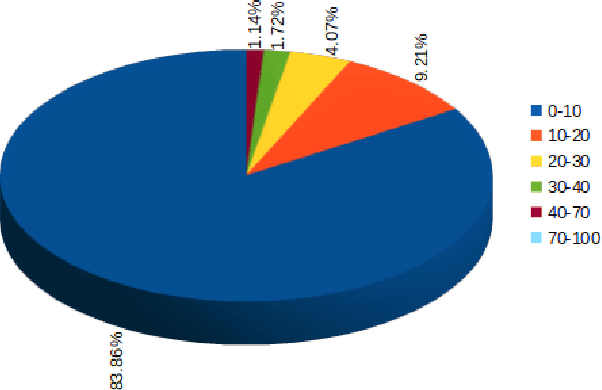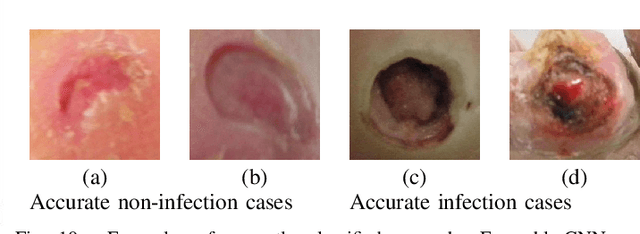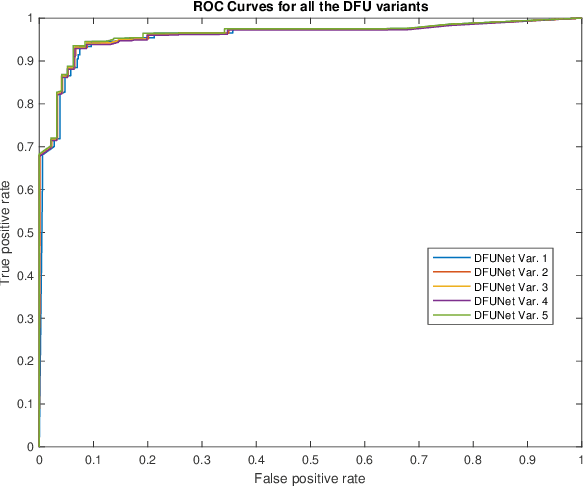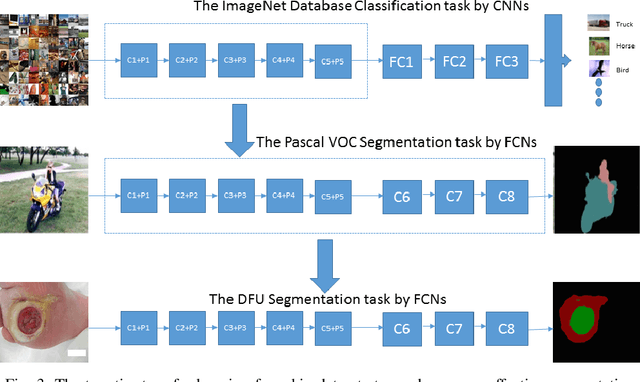Satyan Rajbhandari
DFUC2020: Analysis Towards Diabetic Foot Ulcer Detection
Apr 24, 2020



Abstract:Every 20 seconds, a limb is amputated somewhere in the world due to diabetes. This is a global health problem that requires a global solution. The MICCAI challenge discussed in this paper, which concerns the detection of diabetic foot ulcers, will accelerate the development of innovative healthcare technology to address this unmet medical need. In an effort to improve patient care and reduce the strain on healthcare systems, recent research has focused on the creation of cloud-based detection algorithms that can be consumed as a service by a mobile app that patients (or a carer, partner or family member) could use themselves to monitor their condition and to detect the appearance of a diabetic foot ulcer (DFU). Collaborative work between Manchester Metropolitan University, Lancashire Teaching Hospital and the Manchester University NHS Foundation Trust has created a repository of 4000 DFU images for the purpose of supporting research toward more advanced methods of DFU detection. Based on a joint effort involving the lead scientists of the UK, US, India and New Zealand, this challenge will solicit original work, and promote interactions between researchers and interdisciplinary collaborations. This paper presents a dataset description and analysis, assessment methods, benchmark algorithms and initial evaluation results. It facilitates the challenge by providing useful insights into state-of-the-art and ongoing research.
Recognition of Ischaemia and Infection in Diabetic Foot Ulcers: Dataset and Techniques
Sep 11, 2019



Abstract:Diabetic Foot Ulcers (DFU) detection using computerized methods is an emerging research area with the evolution of machine learning algorithms. However, existing research focuses on detecting and segmenting the ulcers. According to DFU medical classification systems, i.e. University of Texas Classification and SINBAD Classification, the presence of infection (bacteria in the wound) and ischaemia (inadequate blood supply) has important clinical implication for DFU assessment, which were used to predict the risk of amputation. In this work, we propose a new dataset and novel techniques to identify the presence of infection and ischaemia. We introduce a very comprehensive DFU dataset with ground truth labels of ischaemia and infection cases. For hand-crafted machine learning approach, we propose new feature descriptor, namely Superpixel Color Descriptor. Then, we propose a technique using Ensemble Convolutional Neural Network (CNN) model for ischaemia and infection recognition. The novelty lies in our proposed natural data-augmentation method, which clearly identifies the region of interest on foot images and focuses on finding the salient features existing in this area. Finally, we evaluate the performance of our proposed techniques on binary classification, i.e. ischaemia versus non-ischaemia and infection versus non-infection. Overall, our proposed method performs better in the classification of ischaemia than infection. We found that our proposed Ensemble CNN deep learning algorithms performed better for both classification tasks than hand-crafted machine learning algorithms, with 90% accuracy in ischaemia classification and 73% in infection classification.
DFUNet: Convolutional Neural Networks for Diabetic Foot Ulcer Classification
Dec 10, 2017



Abstract:Globally, in 2016, one out of eleven adults suffered from Diabetes Mellitus. Diabetic Foot Ulcers (DFU) are a major complication of this disease, which if not managed properly can lead to amputation. Current clinical approaches to DFU treatment rely on patient and clinician vigilance, which has significant limitations such as the high cost involved in the diagnosis, treatment and lengthy care of the DFU. We collected an extensive dataset of foot images, which contain DFU from different patients. In this paper, we have proposed the use of traditional computer vision features for detecting foot ulcers among diabetic patients, which represent a cost-effective, remote and convenient healthcare solution. Furthermore, we used Convolutional Neural Networks (CNNs) for the first time in DFU classification. We have proposed a novel convolutional neural network architecture, DFUNet, with better feature extraction to identify the feature differences between healthy skin and the DFU. Using 10-fold cross-validation, DFUNet achieved an AUC score of 0.962. This outperformed both the machine learning and deep learning classifiers we have tested. Here we present the development of a novel and highly sensitive DFUNet for objectively detecting the presence of DFUs. This novel approach has the potential to deliver a paradigm shift in diabetic foot care.
Fully Convolutional Networks for Diabetic Foot Ulcer Segmentation
Aug 06, 2017



Abstract:Diabetic Foot Ulcer (DFU) is a major complication of Diabetes, which if not managed properly can lead to amputation. DFU can appear anywhere on the foot and can vary in size, colour, and contrast depending on various pathologies. Current clinical approaches to DFU treatment rely on patients and clinician vigilance, which has significant limitations such as the high cost involved in the diagnosis, treatment and lengthy care of the DFU. We introduce a dataset of 705 foot images. We provide the ground truth of ulcer region and the surrounding skin that is an important indicator for clinicians to assess the progress of ulcer. Then, we propose a two-tier transfer learning from bigger datasets to train the Fully Convolutional Networks (FCNs) to automatically segment the ulcer and surrounding skin. Using 5-fold cross-validation, the proposed two-tier transfer learning FCN Models achieve a Dice Similarity Coefficient of 0.794 ($\pm$0.104) for ulcer region, 0.851 ($\pm$0.148) for surrounding skin region, and 0.899 ($\pm$0.072) for the combination of both regions. This demonstrates the potential of FCNs in DFU segmentation, which can be further improved with a larger dataset.
 Add to Chrome
Add to Chrome Add to Firefox
Add to Firefox Add to Edge
Add to Edge